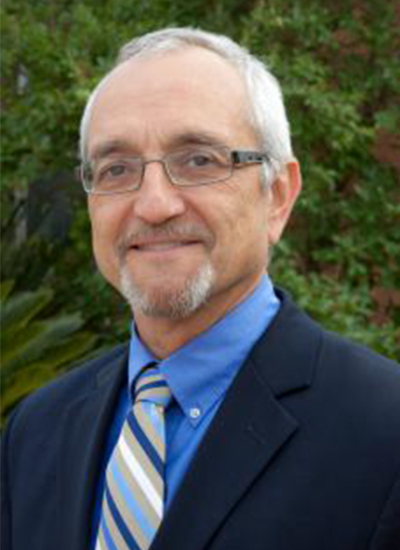Boscheri, G., Kacira, M., Patterson, L., Giacomelli, G., Sadler, P., Furfaro, R., Lobascio, C., Lamantea, M., & Grizzaffi, L. (2012). Modified energy cascade model adapted for a multicrop lunar greenhouse Prototype. Advances in Space Research.
Morden, R. E., Ling, P. P., & Giacomelli, G. A. (1997). Automated plant growth monitoring system using machine vision. Paper - American Society of Agricultural Engineers, 3.
Abstract:
A noncontact plant-monitoring system for measuring the top projected canopy area (TPCA) of lettuce plants (cv. `Ostinata') was developed using machine vision. It makes automatic hourly measurements of the plants and is capable of detecting the effect of nutrient stress only 17 hours after application, based on the average 24-hour change in TPC. The combined growth and motion of the plants is detectable directly from the hourly measurements. The natural cycles of both growth and motion of the plant are synchronized to the light/dark cycles; thus a sliding 24-hour early in TPCA was selected as the test for detecting stress. Furthermore the plant grows very slowly during the early light period and grows at its peak rate during the early night period. A measurement interval shorter than 24 hours would require a more detailed analysis due to the variable growth rates. This noncontact sensing system is capable of detecting nutrient stress in 17 hours while tracking the hourly performance of the lettuce plants, thus providing further understanding of plant growth and motion.
Takakura, T., Kubota, C., Sase, S., Hayashi, M., Ishii, M., Takayama, K., Nishina, H., Kurata, K., & Giacomelli, G. A. (2007). Evapotranspiration rate measurement by energy-balance equation in a single-span greenhouse. 2007 ASABE Annual International Meeting, Technical Papers, 8 BOOK.
Abstract:
An energy balance equation was used to estimate evapotranspiration in a greenhouse, and an instrument for this purpose was developed. It was found that the present method is simpler than that using the Penman-Monteith equation and the estimated values by this method were in good agreement with measured data. It is also reported that normal radiation sensor measurements on a horizontal surface are not adequate for measuring radiation received by a plant canopy in a greenhouse.
Giacomelli, G. A. (2009). Engineering principles impacting high-tunnel environments. HortTechnology, 19(1), 30-33.
Abstract:
High tunnels are a special type of greenhouse with primary operational goals of season extension, crop quality improvement, and new crop production opportunities to reach unique markets. From an engineering viewpoint, high tunnels have many of the same design concerns as larger, more complex greenhouses. They capitalize on the greenhouse effect as do all enclosed plant growth structures. However, less automated environmental control systems are required for the desired crop production. Tunnel designs are less complex and less expensive than large high-technology greenhouse ranges, but they must be designed and constructed with the fundamental assurance of structural stability, safety, efficient layout, appropriate environmental control, and effective crop management in mind.
Lobascio, C., Boscheri, G., Lamantea, M., Pascale, S. D., Giacomelli, G., Sadler, P., & Wheeler, R. (2012). Review and perspectives of plant cultivation facilities and technologies for space exploration. Proceedings of the International Astronautical Congress, IAC, 1, 565-572.
Abstract:
Future habitation of space will necessitate engineering of complex systems capable of performing critical tasks for life support, including atmosphere revitalization, water purification and food production. Bio-regenerative Life Support Systems represent an integrated solution to these problems, with higher plants cultivation facilities as a key element capable of providing a variable percentage of the astronauts' diet. A Food Complement Unit is a potential solution for providing fresh crops and dietary supplements for the crew on the International Space Station (ISS) and future space exploration vehicles. Larger greenhouses are envisaged on planetary surfaces for longer missions, providing percentages of astronauts' diet up to 40 - 50%. Safe, sustainable and reliable operations of such systems in their relevant environment, mission and associated spacecraft is challenging and requiring an organized technological development approach. Critical subsystems necessitating further technological development include: Nutrient Delivery System - with root zone interactions, multi-phase flows, bio-contamination issues, and optimization of growth substrates Plant Illumination System - with associated high energy consumption, to be reduced via alternative light delivery strategies and technologies - Air Management - featuring trace contaminants removal, gas exchange with the crew quarters Exploitation of the ISS and of Earth analogues are opportunities to be pursued for such critical technologies demonstration, to provide a solid baseline for exploration architectural studies. This paper reports a brief summary of existing plant growth facilities, a review of the most critical plant production technologies and a roadmap for necessary further developments, focusing on the potential of ISS and of Earth analogues exploitation for their demonstration. ©(2012) by the International Astronautieal Federation.


